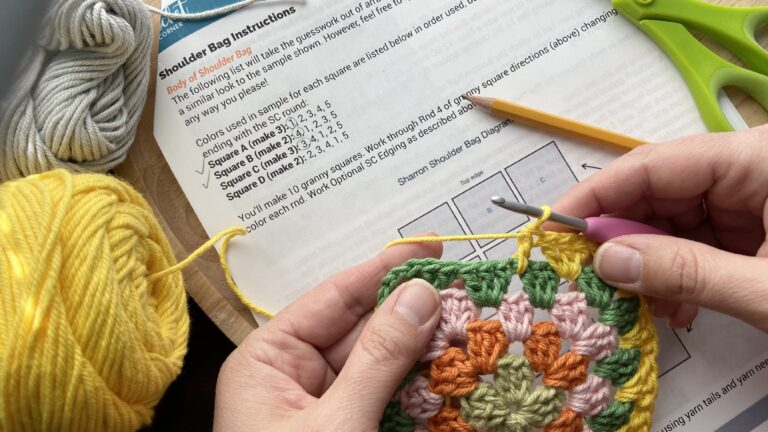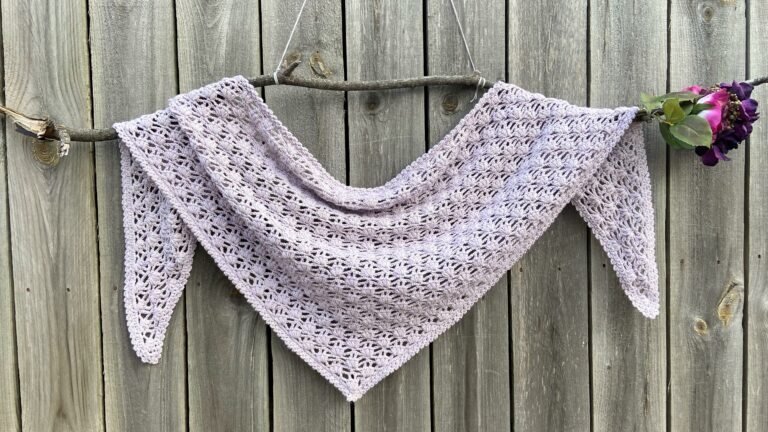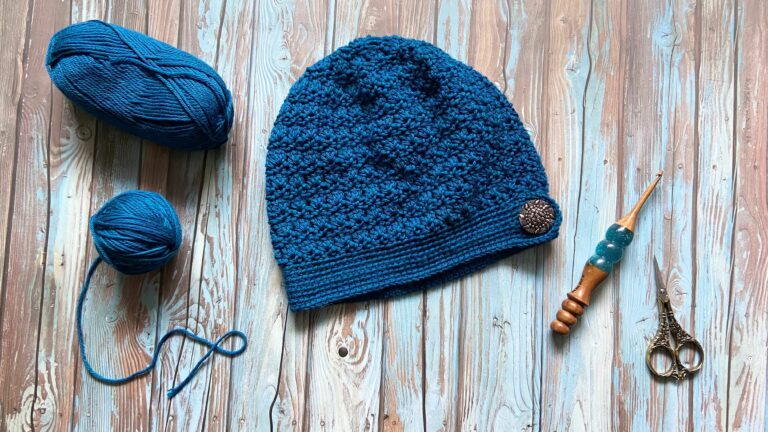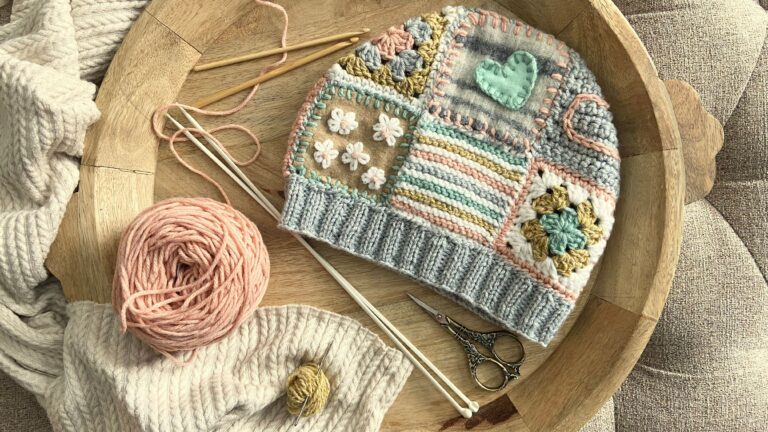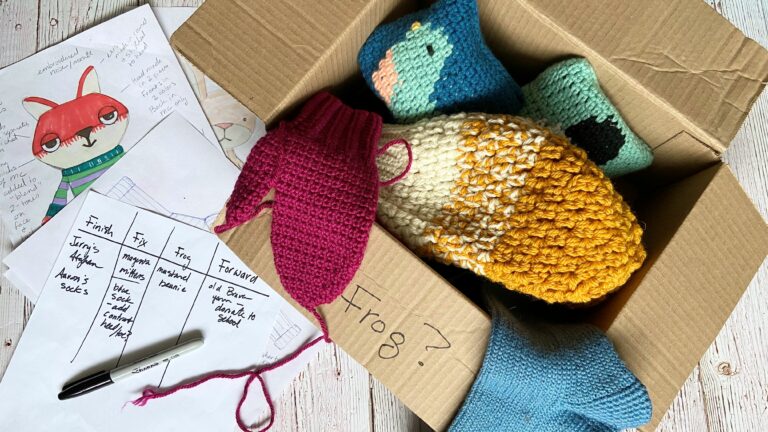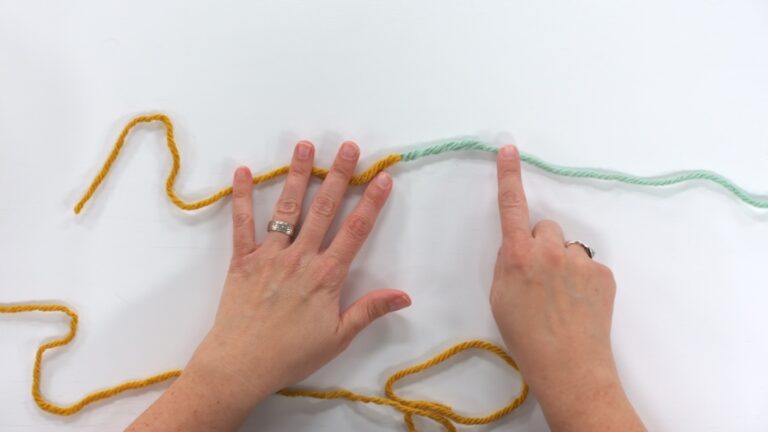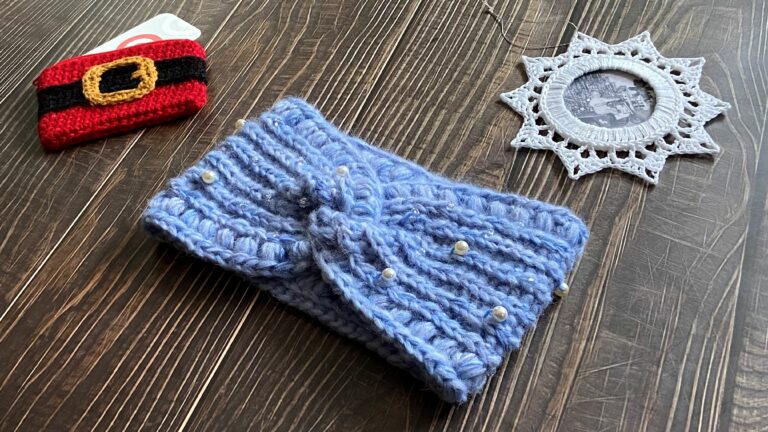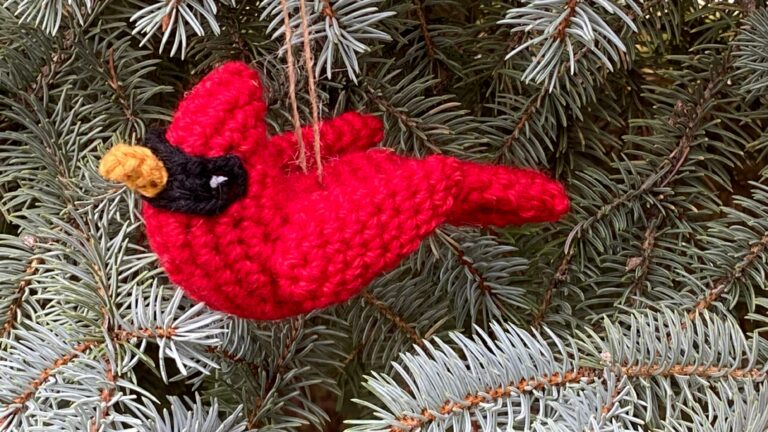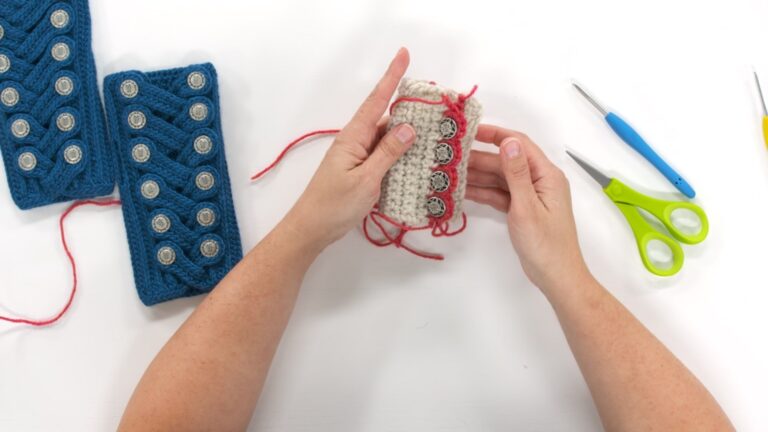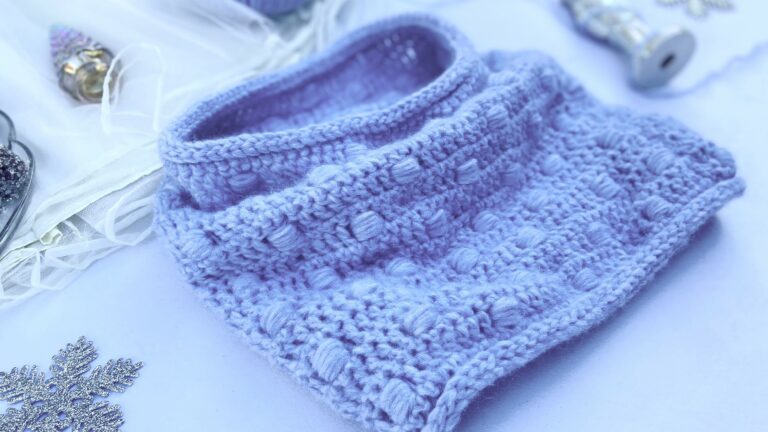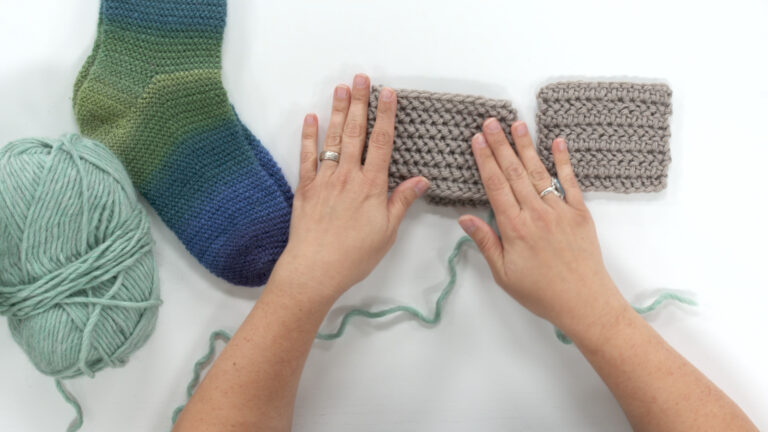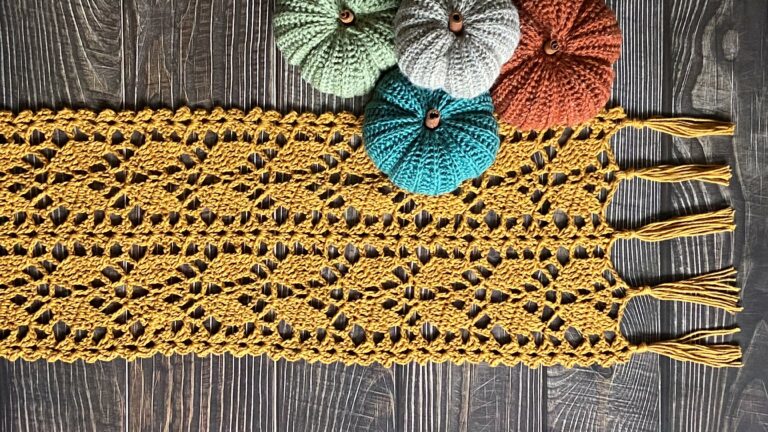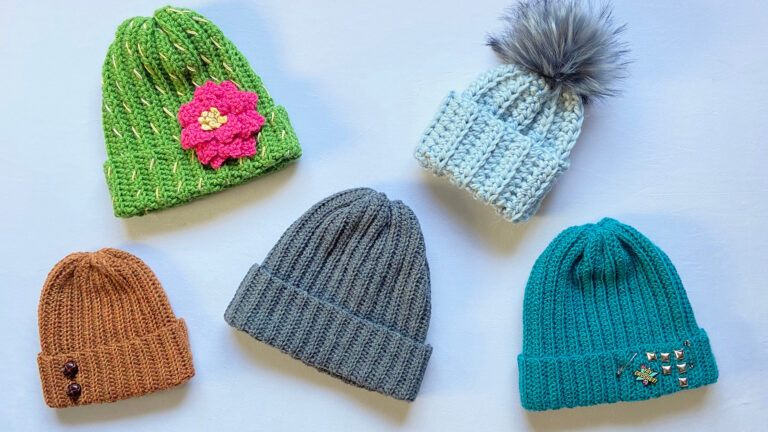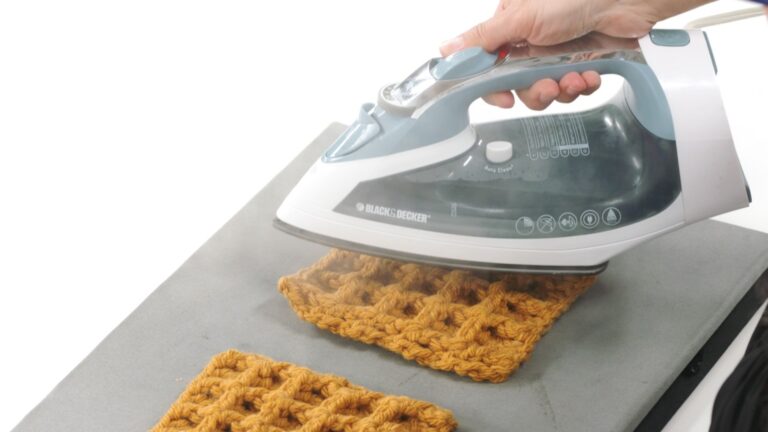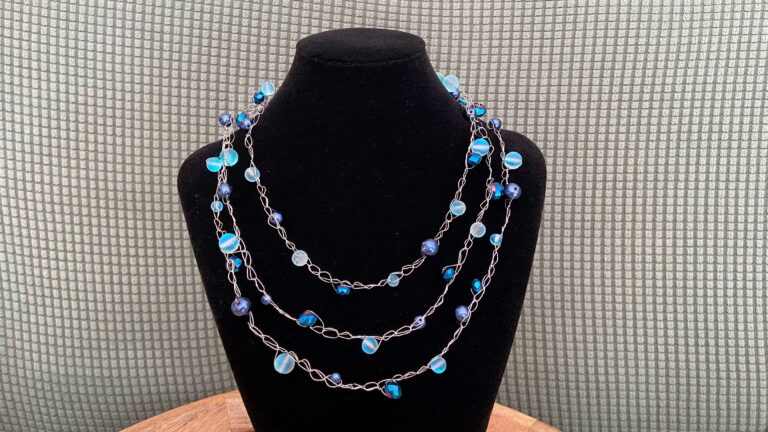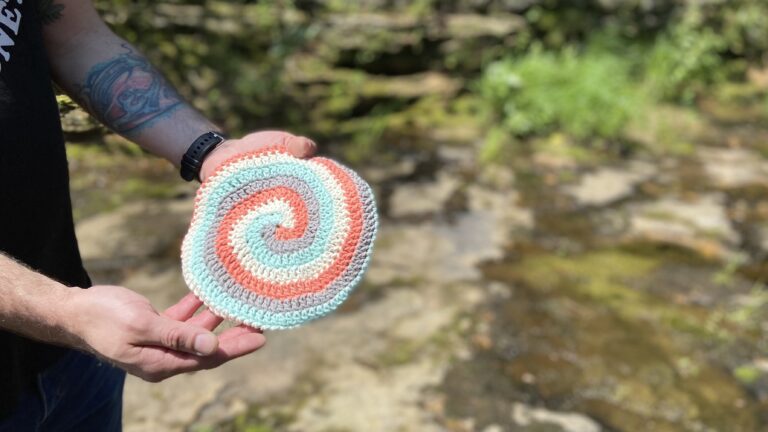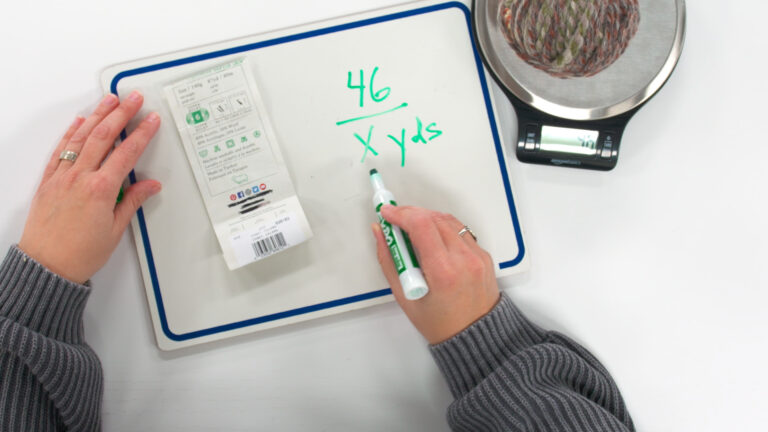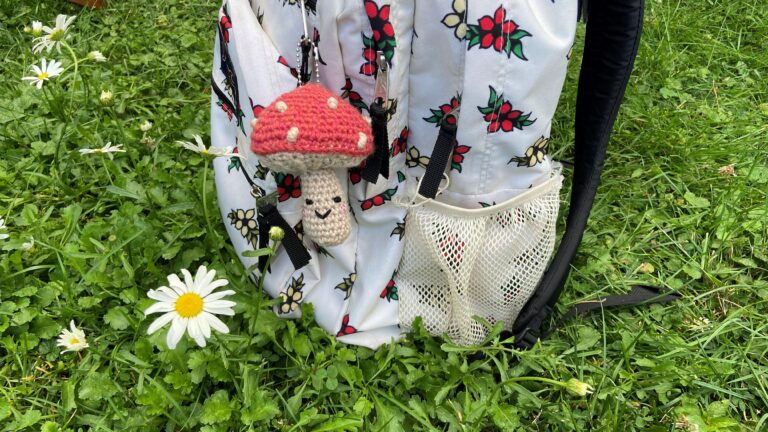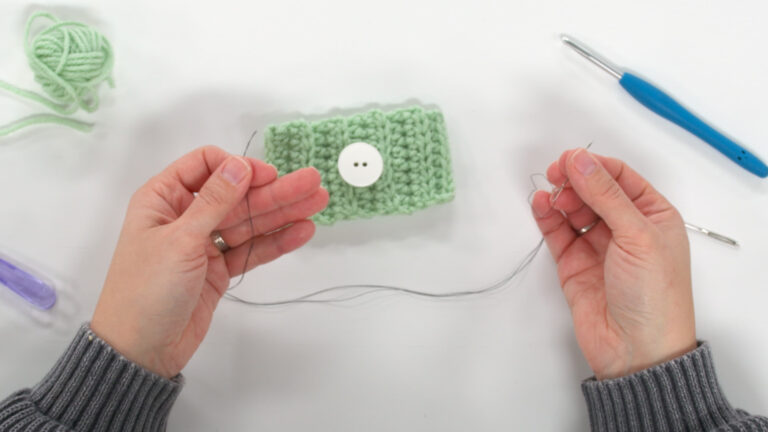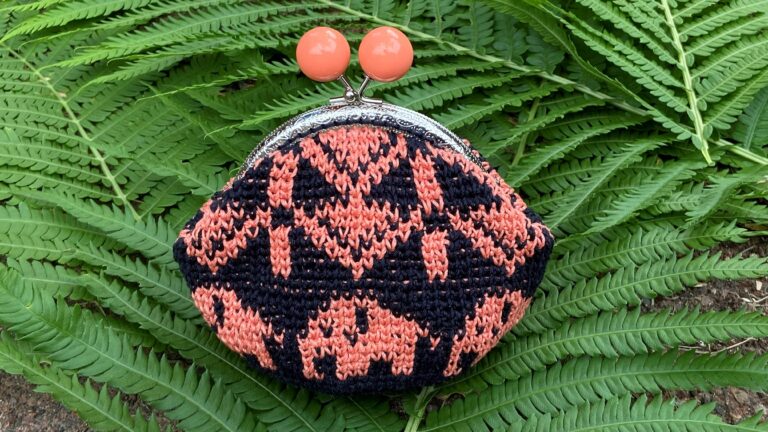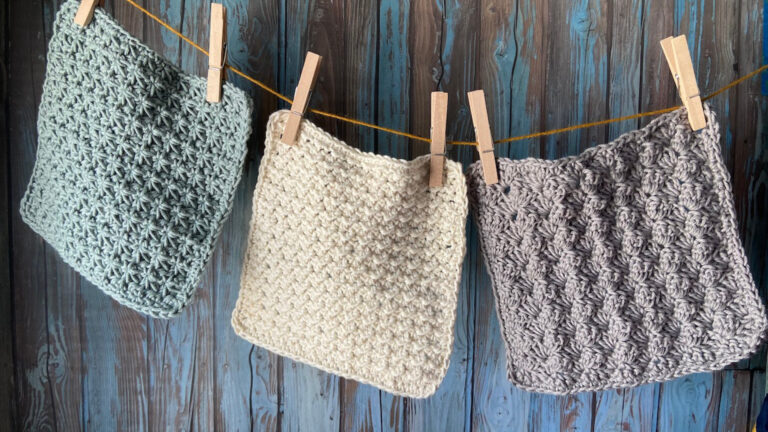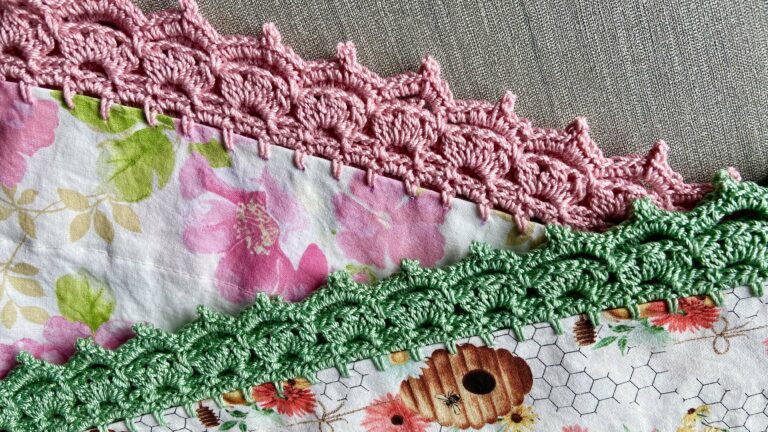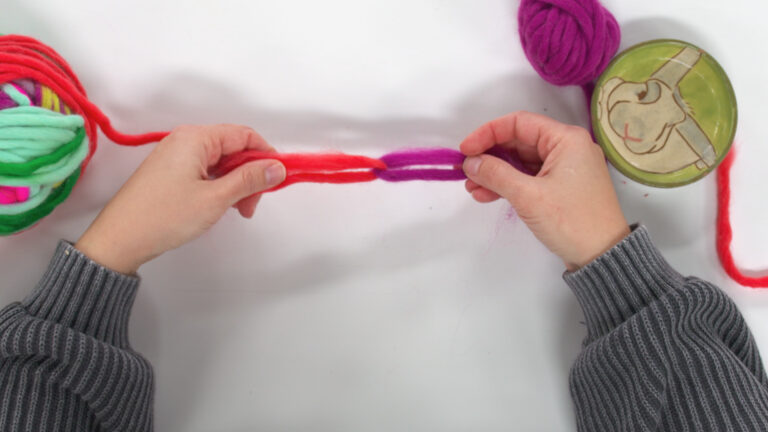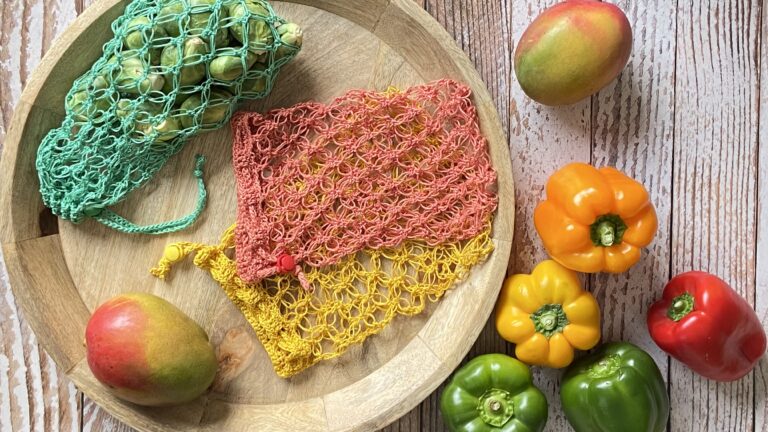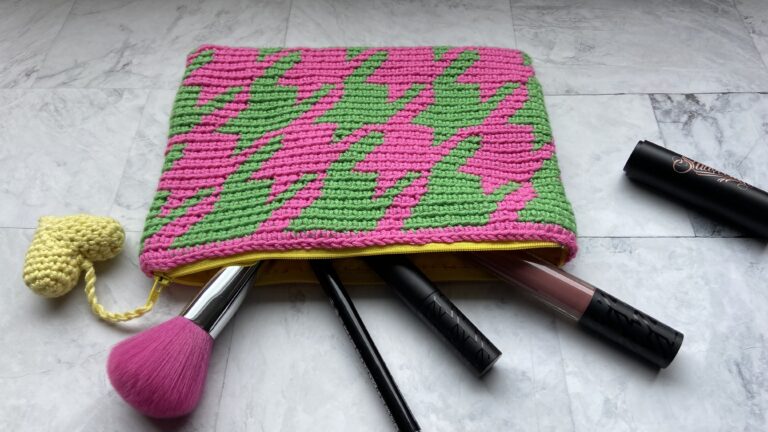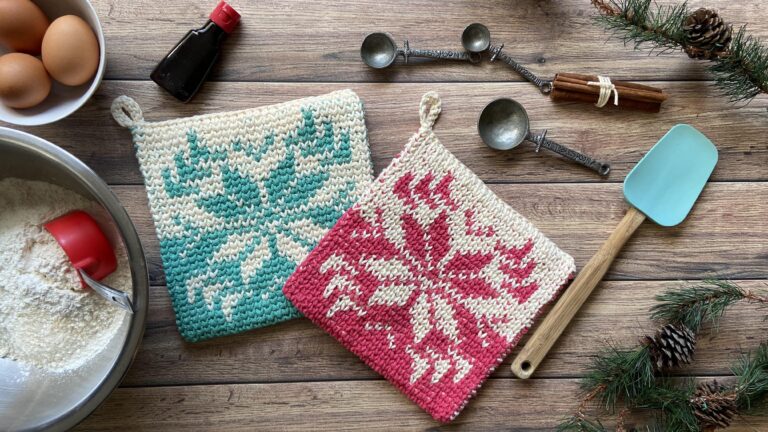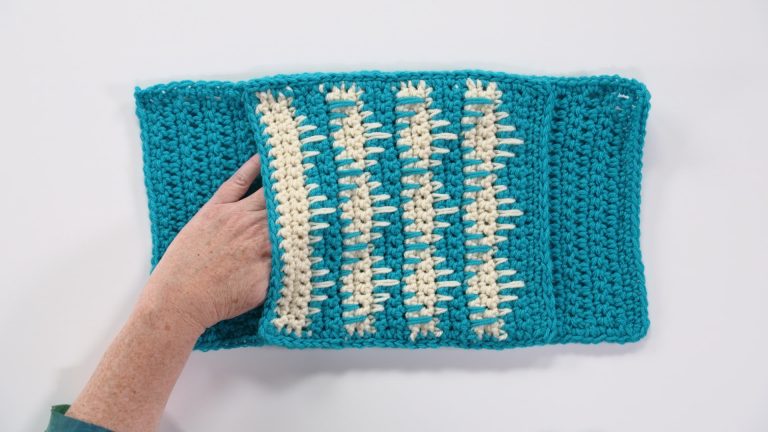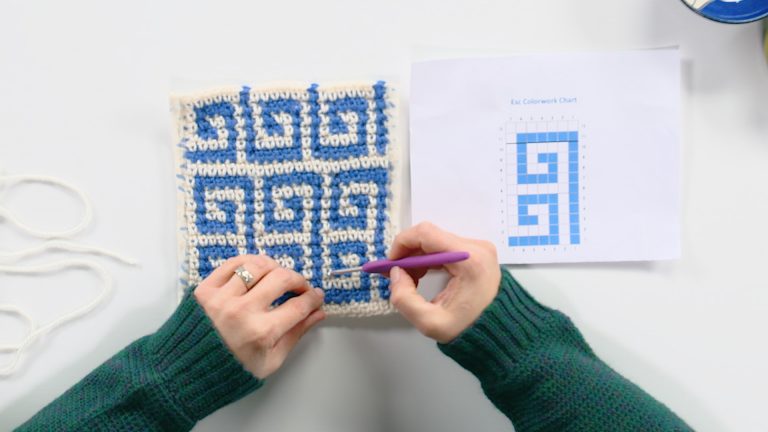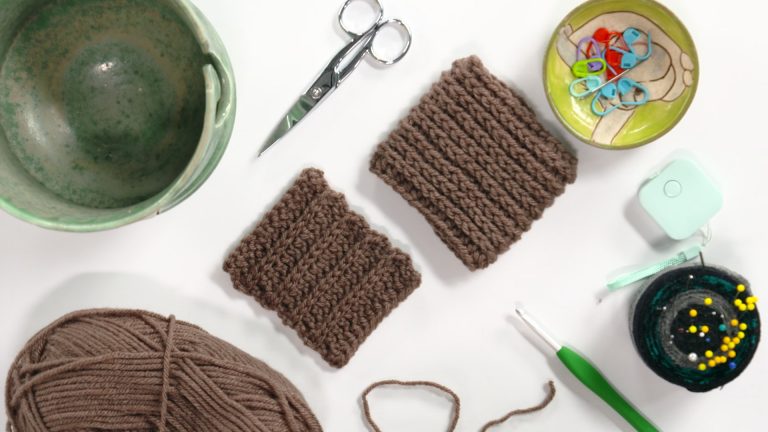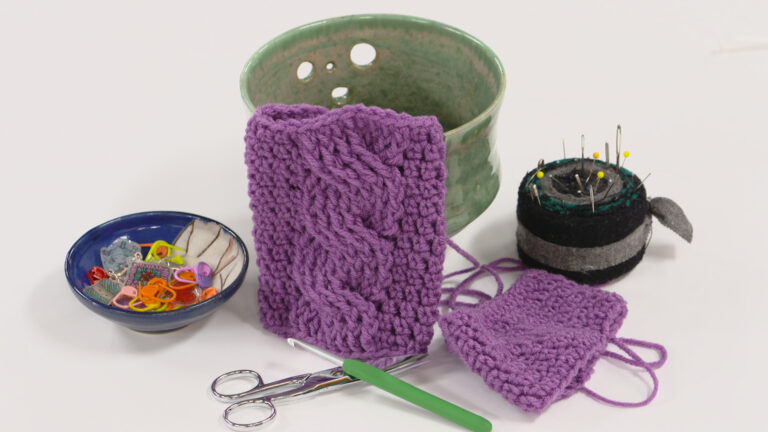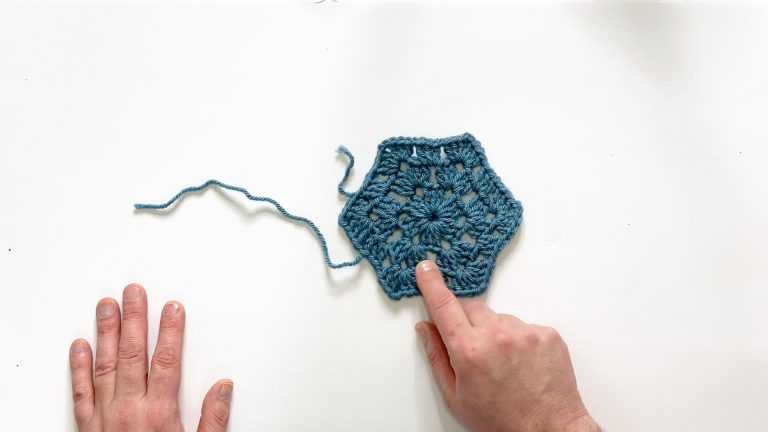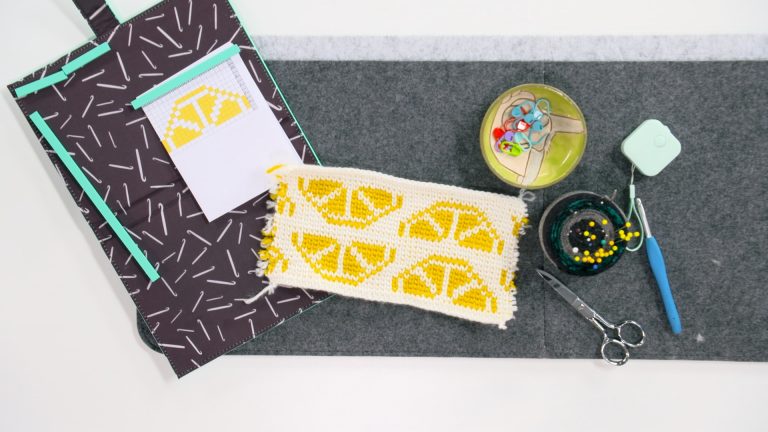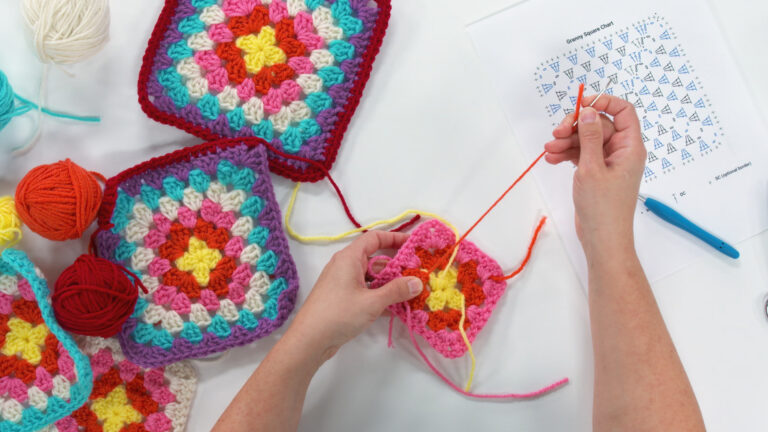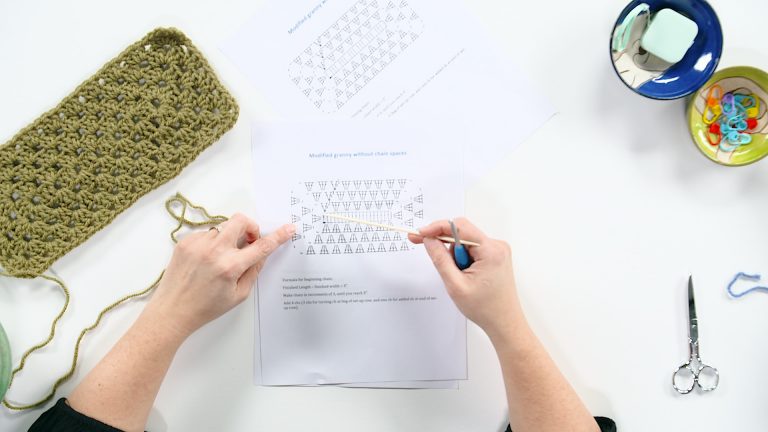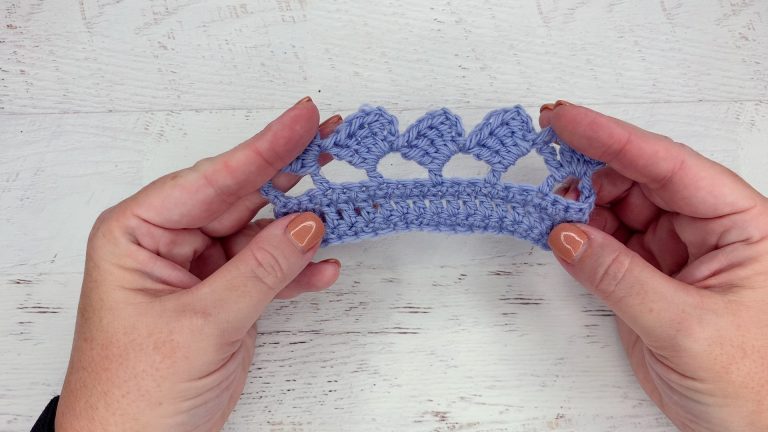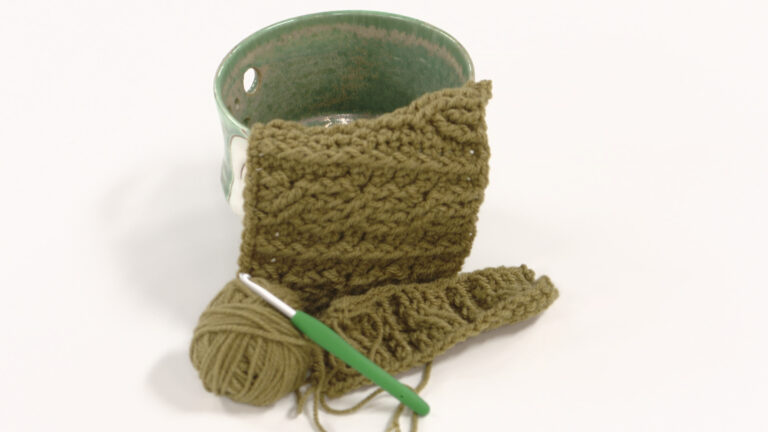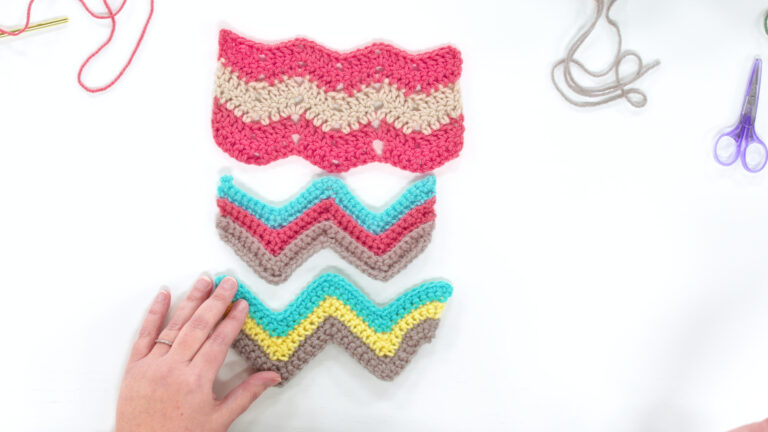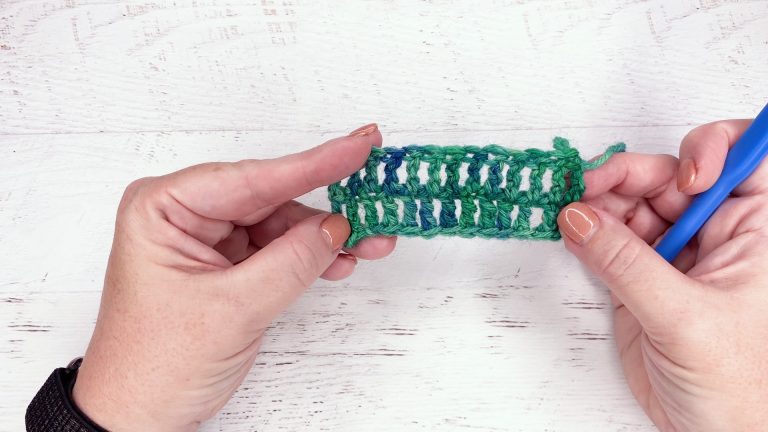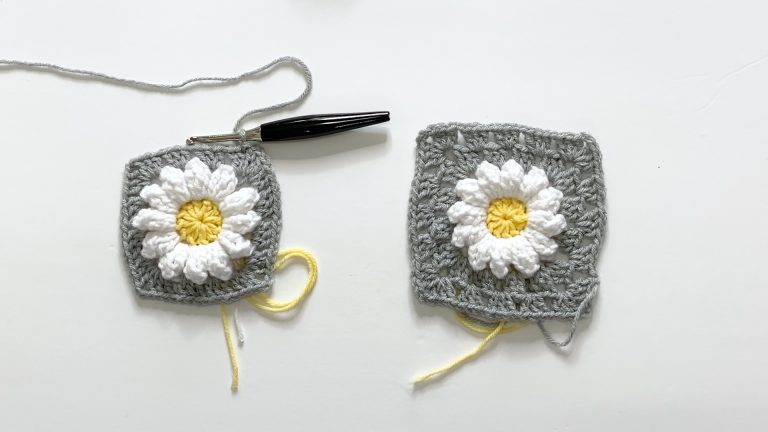
Front Post Double Crochet Colorwork
Brenda K.B. AndersonThere are many different ways that colorwork can be created in crochet. Different stitches provide a different look to the fabric. Join crochet expert Brenda K.B. Anderson as she works a colorwork chart using front post double crochet stitches. She’ll show you how to read a colorwork chart, work the front post double crochet stitch, and share tips on how to keep your work neat and tidy.
Working a small sample, Brenda begins with a foundation chain. She notes that it’s personal preference as to whether you want to start working in the round immediately; Brenda prefers to work the first row flat in the main color and then join in the round to start working the chart. She adds an extra six stitches to the chain to be worked as edge stitches, followed by a single turning chain. She works a row of double crochet in the main color, and then joins in the round and begins working the chart.
When working front post double crochet colorwork, strands of yarn (or floats) will be carried along the Wrong Side of the work. Brenda notes that it’s important to take care that the floats maintain an even tension and that they don’t get too long. It’s easy to snag a float or cause the fabric to pucker, so be sure to take your time and twist the yarn regularly to catch the floats. Brenda also then shares her tips for managing the yarn so that it doesn’t become too twisted.
Once Brenda is done with her swatch, she snips between the edge stitches to have the swatch lay flat. She notes that by using the front post double crochet stitches, the fabric is more open and flexible than other types of crochet colorwork. Additionally, the stitches are stacked nicely on top of each other, making for a crisp design on the fabric.
What type of colorwork do you like to use in crochet?
Explore videos by Brenda K.B. Anderson
You may be interested in
Premium Membership
Unlock exclusive member content from our industry experts.
- 24/7 Access to Premium Crochet Videos, Projects, and Tips
- Step-by-Step Instructional Demos, Patterns, and Tutorials
- Access to Ask the Expert Program
Unlock exclusive member content from our industry experts.
- 24/7 Access to Premium Crochet Videos, Projects, and Tips
- Step-by-Step Instructional Demos, Patterns, and Tutorials
- 2 Full-Length Classes to Keep in Your Account for Life
- Access to Ask the Expert Program
Gold Membership
$333 Value
Get everything included in Premium plus exclusive Gold Membership benefits.
- 24/7 Access to Premium Crochet Videos, Projects, and Tips
- Step-by-Step Instructional Demos, Patterns, and Tutorials
- 5 Full-Length Classes to Keep in Your Account for Life
- 10 Downloadable Crochet Patterns
- Discounts on Purchase-to-Own Content in the Creative Crochet Corner Shop
- Access to Ask the Expert Program
- Access to GOLD LIVE Streaming Events

